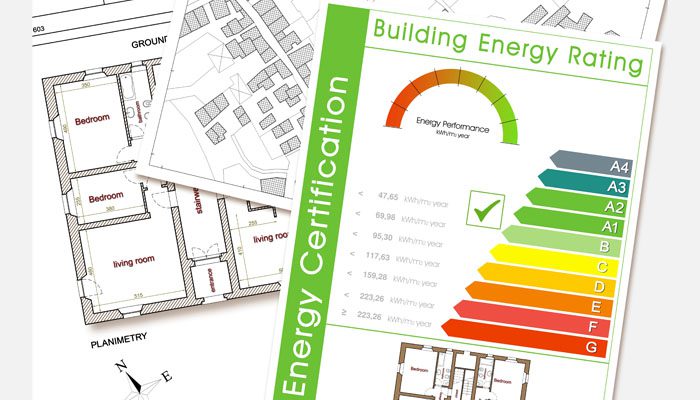Energy efficiency is now more important to landlords and tenants than ever before. Rocketing energy bills have impacted 22 million UK householders to date. From 1st October, bills increased again by a further 27% – meaning the average energy bill went up from £1,971 to £2,500 a year.
 © Francesco Scatena / Shutterstock.com
© Francesco Scatena / Shutterstock.com
The price of gas and electricity has been soaring since the Covid-19 pandemic, as energy consumption increased after the lockdowns ended and people went back to work, leading to short supplies. Then, further increases were caused when the Russian invasion of Ukraine in February 2022 led to shortages across Europe.
UK energy regulator Ofgem sets a price cap four times a year to control how much the wholesale energy costs are passed on to customers. The price cap was first lifted significantly in April 2022, after several smaller energy suppliers went bust in 2021.
Energy efficiency for tenants
The problem for tenants is that they can’t carry out any home improvements to improve energy efficiency because it isn’t their property, so it’s down to landlords to support them in every way they can.
Carrying out home improvements to make your rental properties more energy efficient is especially important during these troubled times. Landlords should also offer advice on making savings where possible.
This will be useful for both landlords and tenants when new government rules relating to a property’s energy efficiency come into effect in 2025, at which time landlords must ensure any new tenancies offer a minimum EPC rating of C – rental properties will have until December 2028 to comply. Currently, the law requires an E rating.
Industry leaders are suggesting this could be a good time for landlords to start making their portfolios more energy efficient. It might also be wise to carry out any home improvements before the colder winter weather sets in and bills go up further.
Energy Performance Certificate
The Energy Performance Certificate, known as the EPC, helps landlords and tenants to understand the rental property’s energy performance, identifying areas for improvement. Energy efficiency starts with the most efficient A-rating and goes through the full spectrum to the least efficient G-rating.
Every landlord must provide tenants with an acceptable efficiency performance. Not only will this help to keep bills down, but it will also help the environment by reducing every home’s carbon footprint. Your portfolio will also become more attractive and more affordable to future tenants when it has an EPC that falls into the higher rating bracket.
New tenants must be provided with a copy of their home’s EPC so they can use the information to estimate the expected costs of their utility bills in their new home. As a responsible landlord, there are many ways you can help:
Heating system
Over time, older central heating systems and boilers can grow less energy efficient. This means the older the boiler, the more it is likely to cost to run. When you upgrade to a new condensing boiler, this provides an efficiency level of about 90%, while a non-condensing boiler offers an efficiency level of around 75%. It can lead to an average saving of around £150 a year for tenants living in semi-detached houses.
Experts say boilers should usually be replaced every ten to 15 years, depending on whether they have been well maintained and serviced regularly.
Insulation
Rental properties should have suitable loft insulation, as this significantly reduces heat loss through the roof.
Loft insulation should have a 40-year lifespan, so it offers a particularly good return on investment. However, unless you’re an expert, it isn’t a DIY job most landlords can tackle, so it’s better left to the professionals.
Draught proofing
Draught proofing can also improve your portfolio’s energy efficiency rating.
Block any gaps where warm air can escape, and cold air can get in. Keeping the warm air trapped inside means it will cost less to heat the property. Areas to check include chimneys, windows, doors, floorboards, skirting boards, pipework, loft hatches, old extractor fans and cracks in the walls.
Seal around the edges of the windows, provide draught excluders and fit a new front door if the old one is a little draughty around the edges.
Energy efficient windows and doors
Landlords can fit energy-efficient double-glazed windows and doors to reduce energy bills by up to £75 a year. It benefits both the tenants and the environment, as it improves each property’s carbon footprint. It will also benefit you as a landlord, as the home will be more attractive to new tenants.
Newer UPVC windows will help the property to retain heat while also allowing appropriate ventilation, so it will be warm without feeling stuffy.
LED light bulbs
A simple and cheap way of improving energy efficiency is by making the change to LED bulbs and any other energy-efficient lighting. This can reduce electricity bills, particularly if you’re the landlord of a number of HMOs.
Lighting accounts for 15% of the average property’s electricity bill, according to the Energy Saving Trust. By switching to compact fluorescent lamps or LEDs, you can save around £40 per household annually.
LED bulbs used to be quite costly, but in recent years, they have gone down substantially, so they are more affordable, even if you’re refurbishing a number of HMOs. They last longer and are cheaper to use, while some even come with a ten-year guarantee.
By running your rental portfolio in an energy-efficient manner, saving your tenants money on bills, there is more chance they will be able to pay their rent, even through challenging times. If the utility bills are included in the rent, it’s in your best interests to keep them as low as possible.
